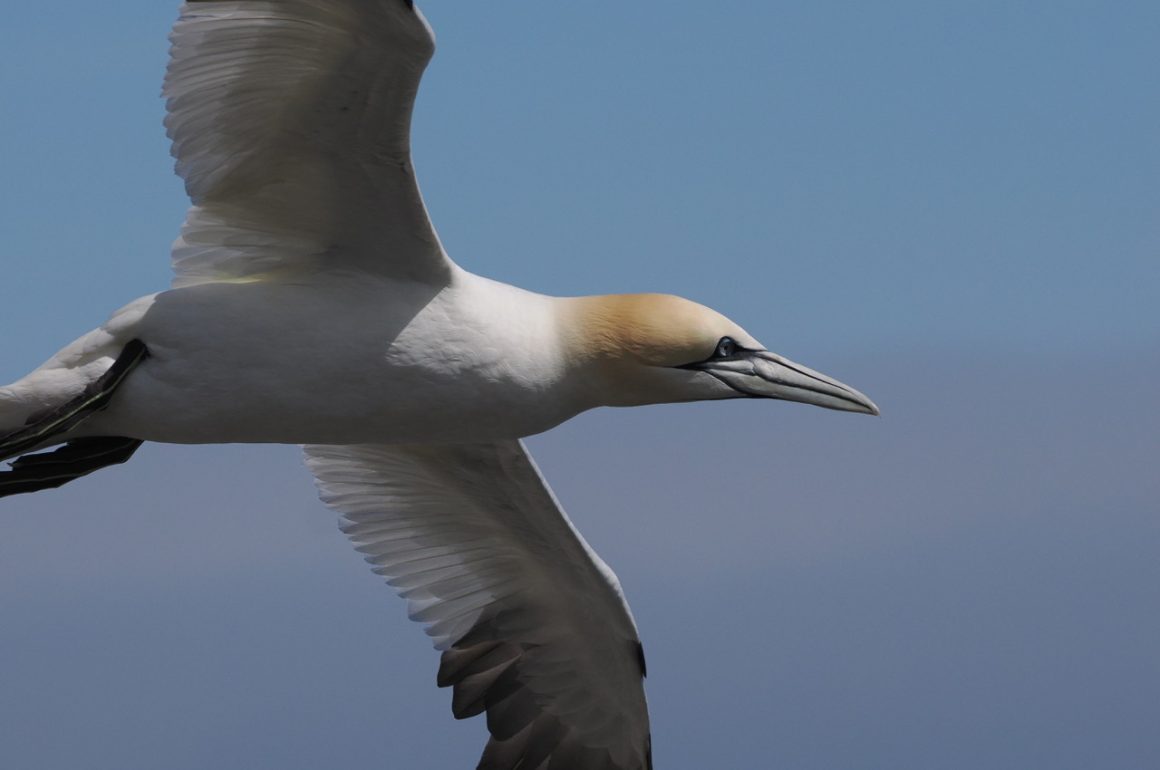
Mid July, and my year list had, to put it bluntly, stagnated, with the only recent addition the totally predictable Ring-necked Parakeet during my visit to Wimbledon. It was time to do something radical, such as visit a different habitat, which explains why I ended up driving 200 miles from my home in Suffolk to North Yorkshire. Now to North American readers I’m sure that 200 miles doesn’t sound like very far, but it took me over four hours to drive, as there were no motorways or even dual carriageways on my route. Driving north gave me the chance to visit totally different habitats, with the certainty of new birds.
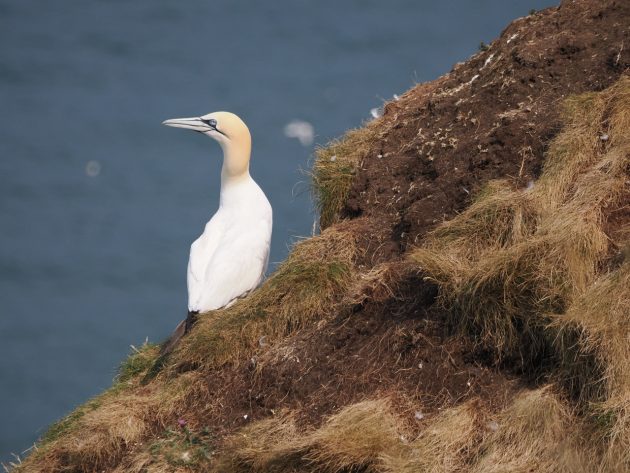
First up was the RSPB’s reserve at Bempton, home to a huge seabird city on the towering chalk cliffs. Here half a million seabirds congregate every spring, so I knew I was going to see four new species for the year: Gannet, Guillemot, Razorbill and Puffin, which I duly did.
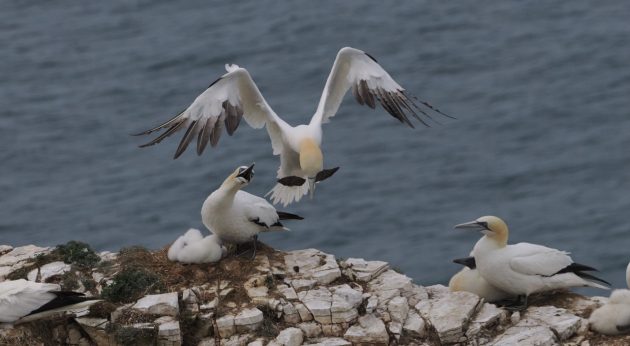
My last visit to Bempton was in early June last year, so my visit this year was five weeks later. Now five weeks may not sound very long, but it’s a big chunk of an auk’s nesting season. I did see plenty of both Guillemots and Razorbills, but most of them had already fledged their young and left the breeding ledges. A Guillemot’s egg takes 28 to 37 days to hatch, and is incubated in turn by both the male and female. Once hatched, the chick doesn’t stay on the ledge for long, fluttering down to the sea when about 19 days old. The sea-faring chicks haven’t really fledged, as they aren’t capable of flying until 50-70 days; once at sea they are accompanied by their parents, who continue to feed them.
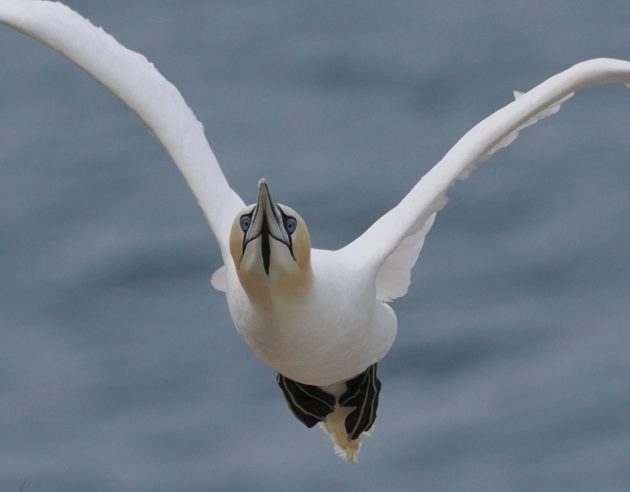
In contrast, the Gannets were only half way through their much longer breeding cycle. A Gannet’s egg takes 44 days to hatch, and the chick then takes another 90 days to fledge; they don’t leave their nests until they can fly. I saw lots of well grown chicks, but they were still white and downy, and far from fledging. Unlike the Guillemot, once the Gannet chick leaves the nest it becomes independent and has to fend, and fish, for itself.
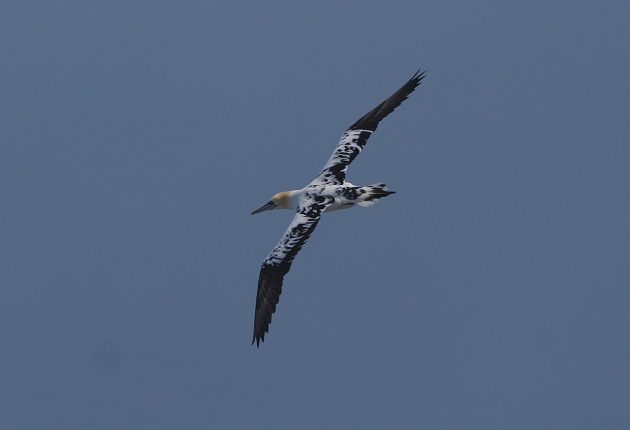
It takes a Gannet at least five years to reach full adult plumage. This striking-looking bird is probably a four-year-old
Bempton’s Gannets are spectacular. Last year a count revealed nearly 11,000 breeding pairs, making it by far the largest mainland breeding site in Britain. It hasn’t always been so, for the first recorded nesting attempt at Bempton was in 1924, and it wasn’t until 1948 that the first chicks were known to have fledged from the cliffs. The colony grew slowly: by 1980 it had only reached 280 pairs, rearing at least 250 young. Today it must be getting close to its maximum size, as all the most suitable nesting ledges are now occupied.
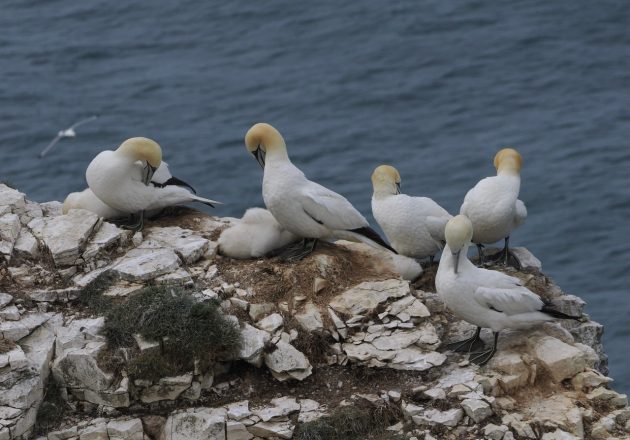
Gannets are arguably the easiest of all birds to photograph in flight, as they are large and fly relatively slowly, especially when approaching their nest. Needless to say, they attract numerous photographers, I saw many armed with impressively large lenses, while others were busy with their phones.
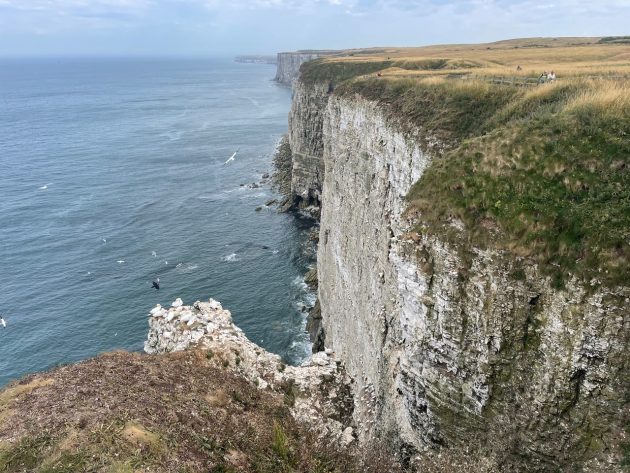
Bempton’s 400ft chalk cliffs support a seabird city of half a million birds
Though Puffins do breed at Bempton and they are relatively easy to see, it’s not a great place to photograph them. Serious Puffin photographers head to Skomer, off the Welsh coast, or the Farne Islands off Northumberland in northern England. Only one Puffin came in range of my camera, and as you can see (below), it’s hardly a great shot. I did see more on the sea, 400ft below me.
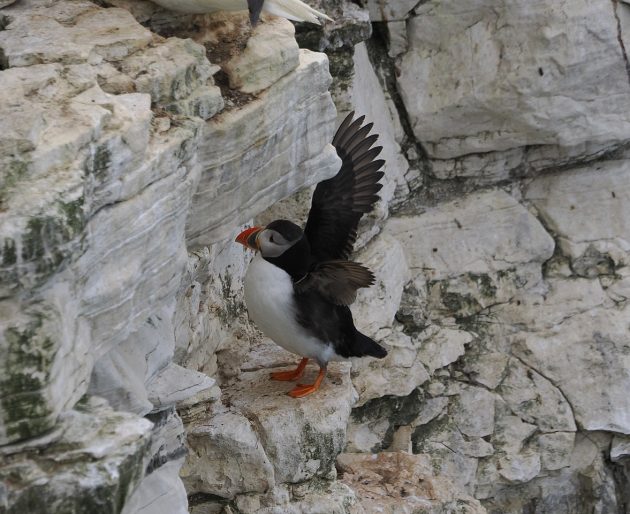
Razorbills are easy to photograph at Bempton in June, but I saw none within camera range on this visit. More co-operative were the Kittiwakes – Bempton’s colony is of international importance. Kittiwakes are an indicator species, for if they have a good breeding season, the Razorbills, Guillemots and Puffins generally do so, too. I suspect that this year has been a good one, but I couldn’t find anyone to confirm my suspicion.
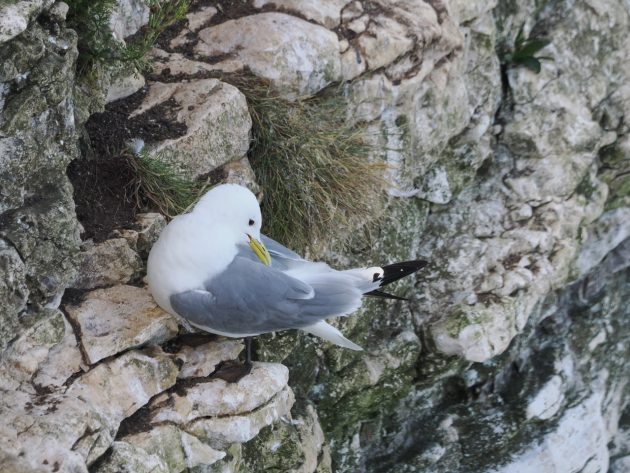
Kittiwakes – the colony at Bempton is of international importance
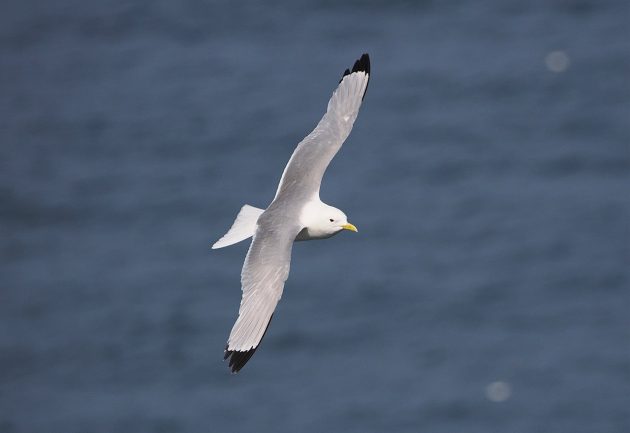
Bempton is a very popular site not only with birdwatchers and photographers, but also tourists who come to experience the spectacle of so many birds in such a spectacular setting. If you want to enjoy the site at its best, and with the paths uncrowded, morning or evening visits are best.
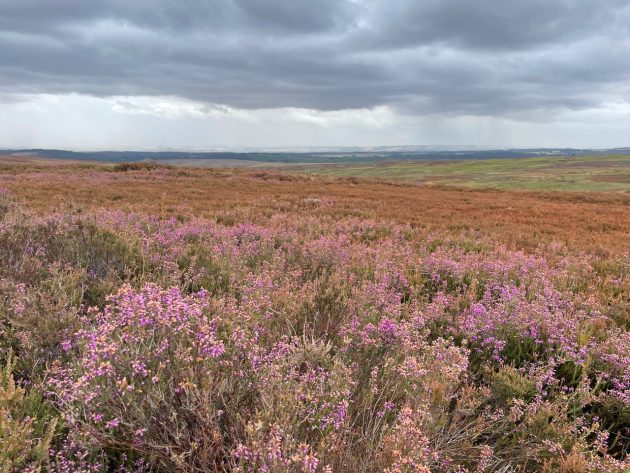
The North York Moors National Park – a broad expanse of heather moorland
In contrast, I saw few people other than a couple of long-distance hikers on the nearby North Yorks Moors National Park. Here the attraction of the heather-clad hills is not just the fine scenery, but a population of upland birds that can be difficult, or even impossible, to see elsewhere. My principal target bird was Red Grouse, now regarded once again as a British endemic. My visit to the same area a year before had drawn a blank, as low cloud descended, blanketing the moors, making it difficult to see the road I was driving on, let alone a grouse.
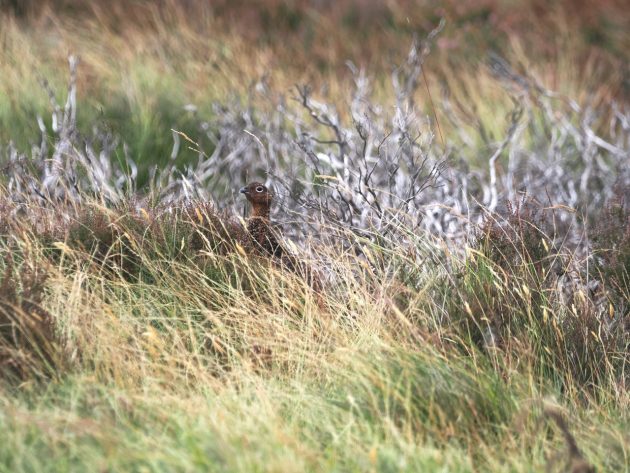
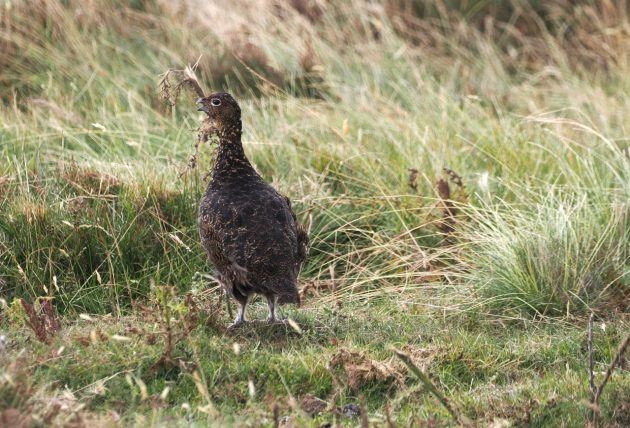

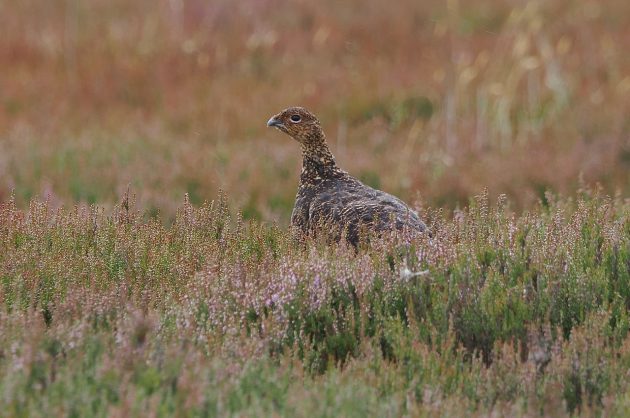
I was luckier this time, and I eventually saw several coveys of these attractive game birds. All the old birds I saw were accompanied by well-grown young, suggesting that it had been good breeding season. Red Grouse populations are highly cyclic, and last year productivity was so low that many moors weren’t shot. These moors are specifically managed for the grouse by gamekeepers, whose habitat management and predator control also benefits the ground-nesting waders – mainly Curlews, Golden Plovers and Lapwings – as well as Meadow Pipits, Skylarks and even Merlins.
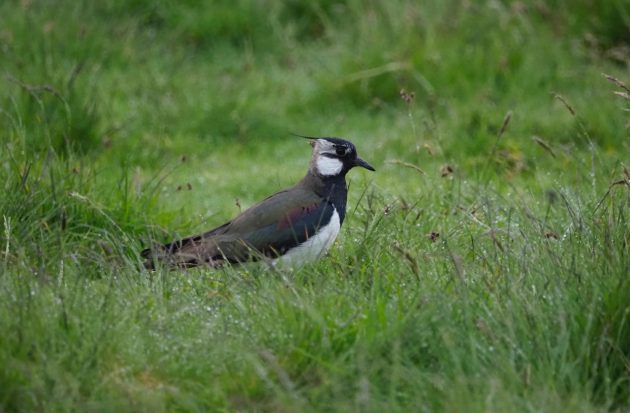
Lapwings leave the moors as soon as their chicks have fledged
Unfortunately I was a couple of weeks too late to see the nesting waders, as they desert the moors once their young have fledged. I only saw a couple of Curlews and the odd Lapwing, but a family of Wheatears was a pleasing sight, as was a Dipper on the River Derwent (below).
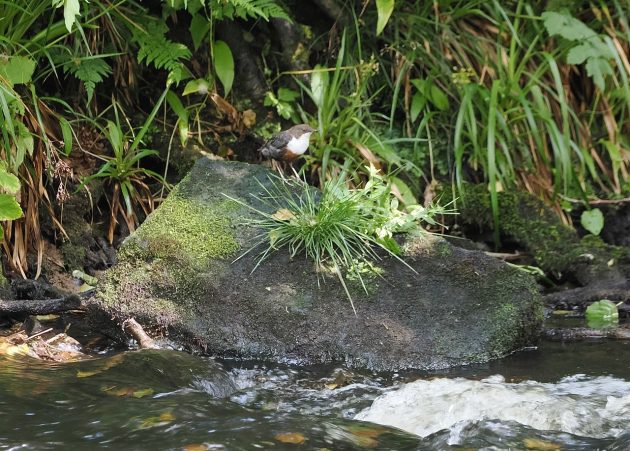
There were a few birds on my Yorkshire target list that I failed to find, most notably Merlin and Honey Buzzard, but my three-night expedition did add eight new birds to the year list, which now stands at a respectable 191 species, so just nine short of my 200 target. Will I manage to find another nine in the next four months? Watch this space.
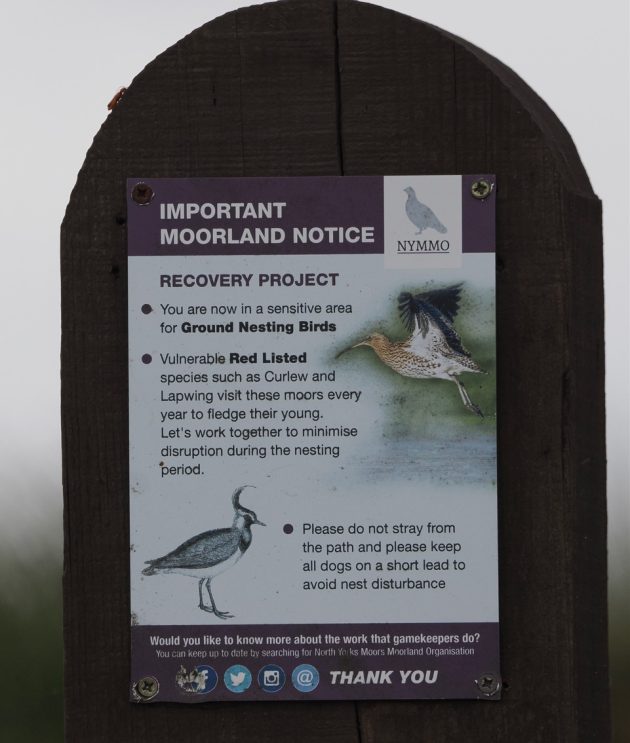


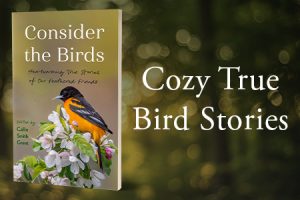




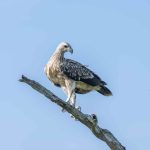
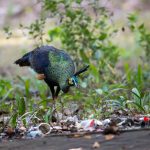
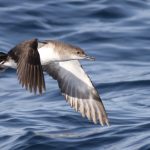
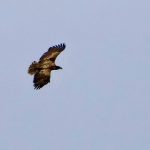

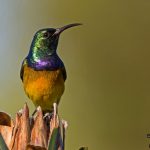
Nice, my old stomping grounds: North Yorks Moors National Park. Love that place. My youngest son is a Yorkshireman and we lived very close to the park in the early 90-ies. It’s a magical place. Fond memories were flooding back when I read this piece.